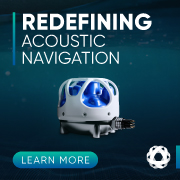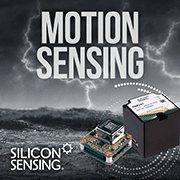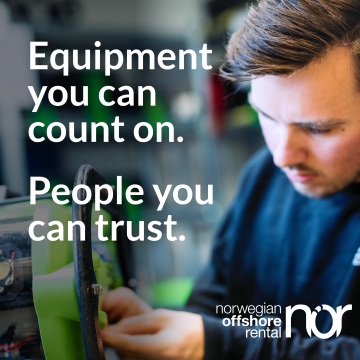
HSH Prince Albert II of Monaco Announces a Quarter of the Ocean Now Mapped
09.05.2023
An additional 5.4 million square kilometres of new data - equating to an area twice the size of Argentina - has been added to the definitive map of the world’s ocean floor, with 24.9 per cent of the seabed now mapped.
Image shows areas of the global seafloor that are considered mapped within the GEBCO grid. The regions coloured grey depict the coverage of mapped areas within the 2022 release of the GEBCO Grid and the areas coloured red show the additional coverage included in the 2023 release. Credit: The Nippon Foundation-GEBCO Seabed 2030 Global Center.
The latest figure was announced by HSH Prince Albert II of Monaco during the International Hydrographic Organization (IHO) Assembly, currently taking place in Monaco. Formed by the representatives of its 98 Member States and Observers, the Assembly meets triannually to discuss new developments in technical standards, ocean mapping and agree on resolutions to guide activities.
The global effort behind mapping the world’s entire ocean floor before the end of the decade is being spearheaded by Seabed 2030 - a collaborative project between The Nippon Foundation and the General Bathymetric Chart of the Oceans (GEBCO), itself a joint programme of the IHO and the Intergovernmental Oceanographic Commission (IOC) of UNESCO.
Speaking at the opening ceremony, Prince Albert II praised developments made in ocean mapping, and acknowledged the role of GEBCO - which this year is celebrating 120 years. GEBCO was initiated in 1903 by his ancestor, Prince Albert I of Monaco.
Mapping the ocean floor is a critical step towards informing decision-making in areas such as resource management, environmental change, and ocean conservation. It directly supports UN SDG 14, to conserve and sustainably use the ocean. Seabed 2030 is a formally endorsed Action of the UN Decade of Ocean Science for Sustainable Development 2021-2030 (The Ocean Decade).
When Seabed 2030 was launched in 2017 to act as a catalyst for the mapping of the ocean floor, only six per cent had been mapped in high resolution. In that same year, the United Nations General Assembly proclaimed the Ocean Decade with a key challenge of developing a comprehensive map of the ocean, to ensure a more sustainable management of the marine environment and its resources.
In six years, a monumental total of 90 million square kilometres of bathymetric data has been acquired by virtue of global partnerships, data mobilisation, and strides in technological innovation. This has led to consequential developments in scientific research, as well as a range of discoveries. Just last month the new seamount catalogue was published including over 19,000 newly discovered undersea volcanoes. Such discoveries help to advance studies in ecology, ocean mixing and plate tectonics, and improve our ability to protect and sustainably manage our ocean.
Even with recent progress, three quarters of the ocean remain a mystery. Some of the key challenges to mapping the entire ocean floor include overcoming the vast scale and depth of the ocean, limited technological capabilities, the high-cost of mapping expeditions, and capacity building.
In addition to ocean mapping activities, Seabed 2030, The Nippon Foundation, GEBCO, IHO and IOC-UNESCO place a strong emphasis on capacity building, with the goal of empowering the next generation of hydrographers and ocean researchers.
To this end, the Nippon Foundation-GEBCO training programme and the IHO’s Empowering Women in Hydrography initiative aim to build a diverse and inclusive community of ocean mappers. These initiatives form a vital component of efforts supporting the overall development goals of the UN and the Ocean Decade, which seeks to build ocean literacy through citizen and community empowerment.
Recent advances in ocean mapping are a testament to the power of collaboration, innovation, and dedication to a shared goal - for the benefit of humanity. GEBCO’s 120th anniversary is a reminder of the significant progress that has been made over the past century and how much is left to be done.
The goal is ambitious yet entirely achievable if we can mobilise the global community to participate. Everyone with a link to the ocean can play a powerful role in helping to map the entire seafloor by the end of the decade.
QUOTES
The Nippon Foundation
“The Nippon Foundation has been working with GEBCO since 2004,” said Executive Director Mitsuyuki Unno. “The program has nurtured more than 100 ocean mappers from 46 countries and the alumni have been supporting the global efforts to complete the GEBCO grid. Recent progress demonstrates the power of international collaboration and the dedication of everyone involved in this project, but we must not lose sight of the ultimate goal. This is a mission that requires the continued support and commitment of all stakeholders, and I call on everyone to join us in this important endeavour.”
Seabed 2030
“The mapping of the ocean floor is an ambitious task that requires the latest technology, innovative approaches, and fundamentally, strong partnerships,” commented Seabed 2030 Project Director Jamie McMichael-Phillips. “Seabed 2030 is fortunate to have the support of its partner organisations who share our vision for a complete map of the ocean, and we’re mindful of what is still to be done."
Intergovernmental Oceanographic Commission of UNESCO
“Mapping the ocean in its entirety has been the ultimate goal of GEBCO since its birth in 1903 under the initiative of Prince Albert I of Monaco. 120 years later, knowing the geometry of our own planet is a must for achieving the objectives of the UN Decade of Ocean Science for Sustainable Development. Our close collaboration with the International Hydrographic Organization in the framework of The Nippon Foundation-GEBCO-Seabed 2030 project resulted in an unprecedented acceleration of the mapped seafloor coverage in just eight years,” said Vladimir Ryabinin, Executive Secretary of the Intergovernmental Oceanographic Commission (IOC) of UNESCO. “With this improved knowledge, we can make better informed decisions about how to protect and sustainably use the ocean, so that it remains a vital resource for generations to come.”
GEBCO
“Six years into The Nippon Foundation-GEBCO Seabed 2030 Project, and in the year we celebrate 120 years of GEBCO, we have increased from 22 million to 90 million square kilometers of ocean seabed mapped and accessible to mankind. This equals twice the landmass of the Asian continent. That is an impressive achievement by any standard. It also means we are still only at the beginning, with 75 percent of the ocean’s seabed still undiscovered,” said Evert Flier, GEBCO Guiding Committee Chair. “Through the Nippon Foundation GEBCO Ocean Mapping Training Program and the IHO 'Empowering Women in Hydrography', we also invest in a diverse future generation of ocean mappers to ensure the important work of GEBCO can continue for decades to come. We urge organisations, companies and governments to consider contributing existing data to support this collective mission. Even low-resolution data - which doesn’t compromise strategic or commercial interests - can prove invaluable in helping us map the gaps and realising the goal of 100 per cent of the ocean mapped.”
IHO
“Ocean mapping is the last great exploration adventure of our time,” said Dr Mathias Jonas, Secretary-General of the IHO. “The data gathered underpins knowledge-based decision-making and will be central to the development of the digital twin of the ocean - this year’s theme for World Hydrography Day. At the heart of this endeavour will be the GEBCO data. It is not just a nice-to-have; it is an imperative that we work together to achieve the goal of a fully mapped ocean.”
Location: Monaco











